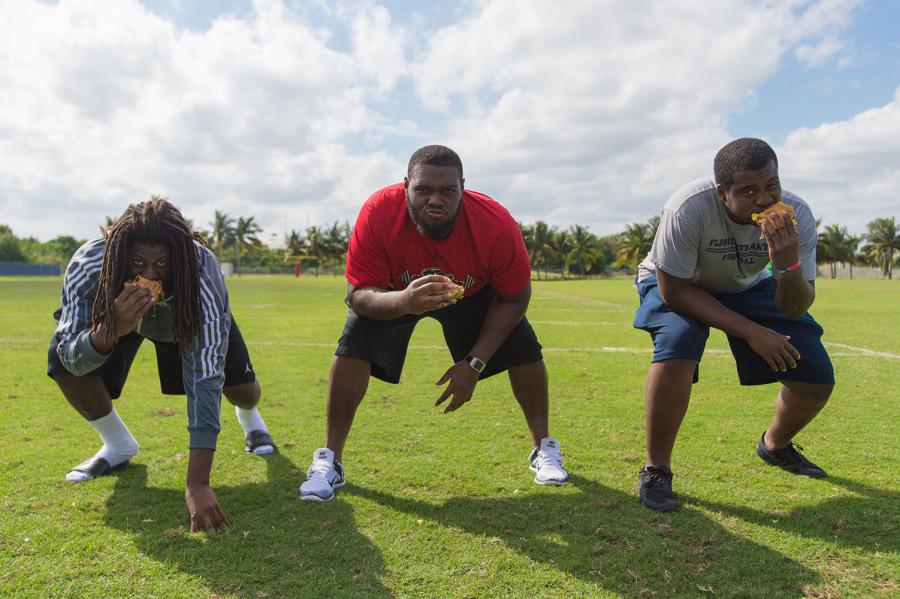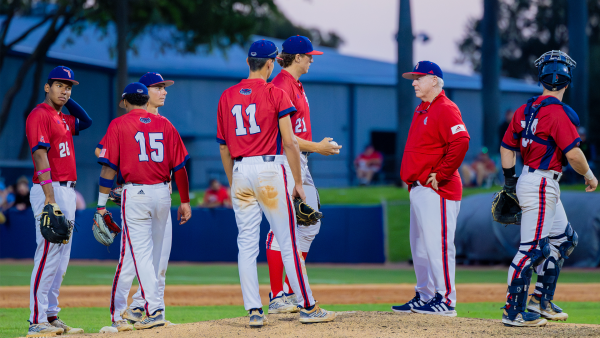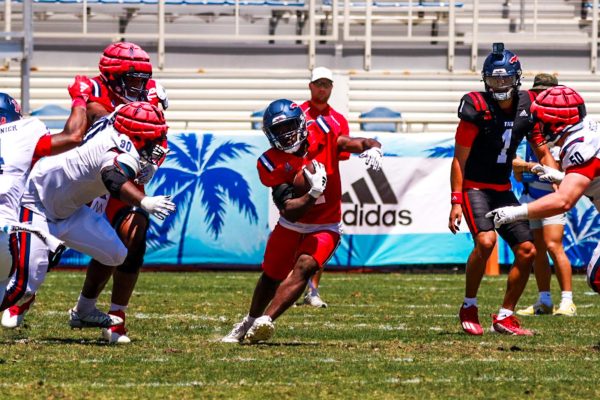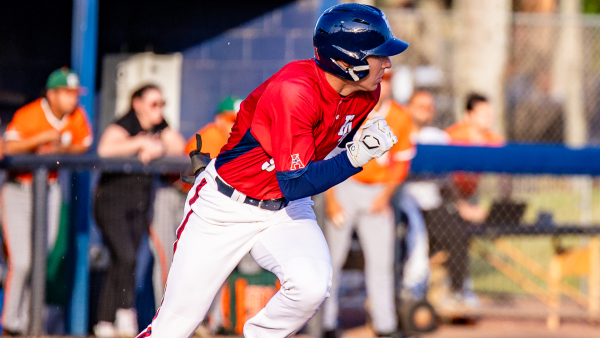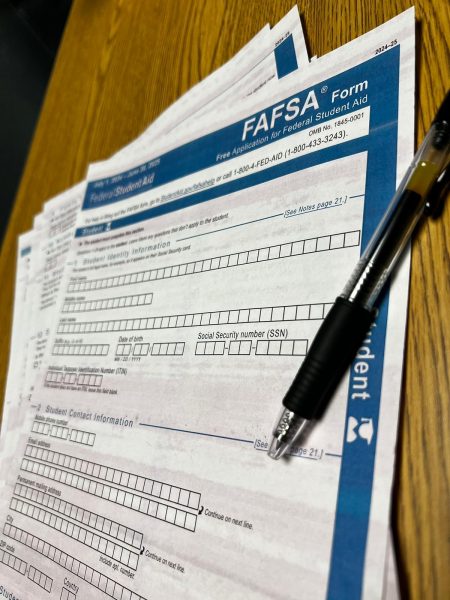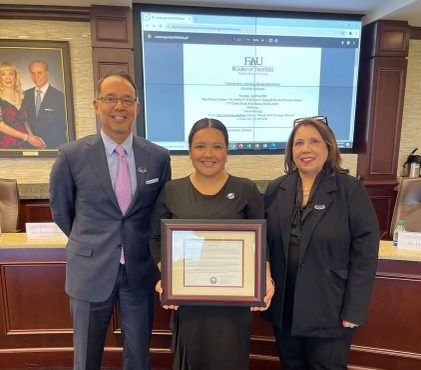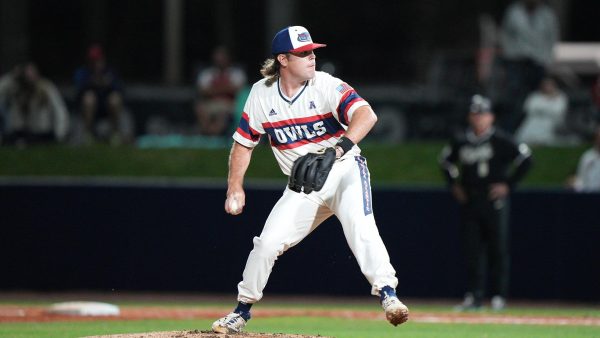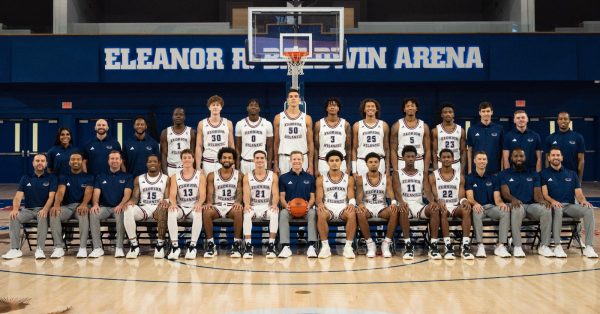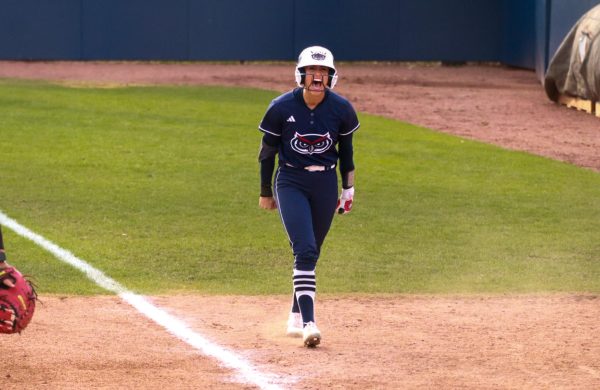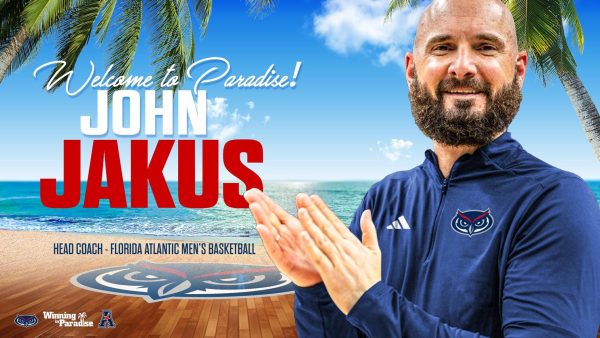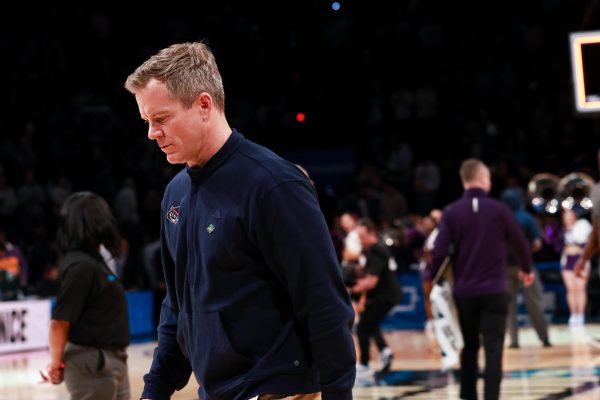Big Men, Big Food
Feeding the heaviest and strongest men on the football team is a complicated task for Florida Atlantic University, and for most other college football programs in the country. The Owl linemen love a hearty meal — some even create them.
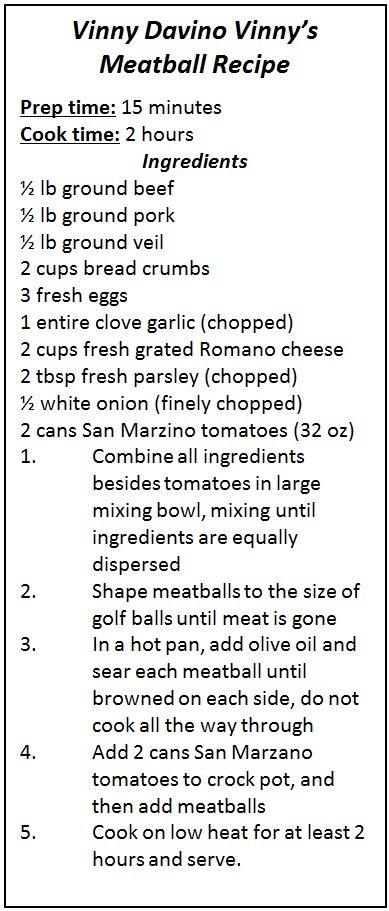 Proper nutrition may be more important in the game of football than any other contact sport. According to a 2011 Wall Street Journal interview with former University of Washington team nutritionist Monica Van Winkle, a 280-pound lineman would need roughly 5,200 calories a day to keep his weight. For that reason, UW hires four full-time chefs to prepare meals for their athletes.
Proper nutrition may be more important in the game of football than any other contact sport. According to a 2011 Wall Street Journal interview with former University of Washington team nutritionist Monica Van Winkle, a 280-pound lineman would need roughly 5,200 calories a day to keep his weight. For that reason, UW hires four full-time chefs to prepare meals for their athletes.
But players at Florida Atlantic don’t have the ritzy amenities that other schools do, even though they have the same need of providing food to players. The bulk of the team’s food comes from the cafeteria, but some comes from the players themselves.
Since the cafeteria is closed during the summer, players have to get a bit more creative in finding food for themselves. Reggie Bain enjoys eating grilled chicken breasts and bratwurst, and he has become adept at preparing both on a George Foreman grill.
Six men on the FAU football team are listed at or over 300 pounds. They are the biggest, strongest men the program has to offer, and they need to eat as much as possible in order to keep their weight. One of those men is junior defensive tackle Trevon Coley.
“I like a lot of meat, a lot of carbs,” said Coley of his favorite meal. “I’m going to need a whole chicken, a half-pot of rice. I’m not too big on vegetables, but I’ll throw some broccoli in there.”
 Defensive tackle Denzel Whitfield called offensive lineman Isaac Edwards the best cook on the team. Edwards was a starter last year, but he is not playing this year because of an injury. “I’m OK,” Whitfield said of his own exploits in the kitchen, adding that his favorite meal is steak and potatoes.
Defensive tackle Denzel Whitfield called offensive lineman Isaac Edwards the best cook on the team. Edwards was a starter last year, but he is not playing this year because of an injury. “I’m OK,” Whitfield said of his own exploits in the kitchen, adding that his favorite meal is steak and potatoes.
“I’m gonna need a lot of protein, so either some baked chicken or some steak,” Whitfield said of his perfect meal. “I love potatoes, and some type of carbs, so maybe some type of pasta.” Perhaps the pasta would come from his mother, Cynthia. “I love her spaghetti,” he said. “That’s the best thing she can cook.”
“Skirt steak, mashed potatoes and gravy, [and] corn. That’s pretty much it,” said senior offensive lineman Mikingson Marsaille of his favorite meal. Marsaille, a native of Haiti, is listed as the second-heaviest player on the team at 320 pounds.
Most players don’t have the luxury of getting a home-cooked meal, but there are a few players on the team who have proven their competence in the kitchen. Vinny Davino, Shane Blair and Isaac Edwards were all mentioned by their teammates as very good cooks.
In higher-profile programs, robust budgets allow schools to allocate funds specifically for getting athletes the calories they need.
The University of Alabama has a dining area designated specifically for its athletes called Bryant Dining Hall. Non-athletes can also eat there, but they must pay an extra $9.75 on top of their regularly priced meal plan. The WSJ article claimed that the University of Nebraska used $1 million feeding its scholarship athletes.
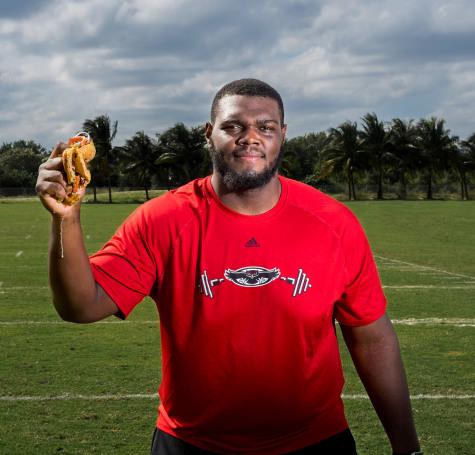
The University of Florida spent $58,000 on pre and post game snacks alone. In 2011, the school had two dietitians, two interns and a handful of volunteers all tasked with making sure that players are not only eating enough, but also eating the right foods.
Years ago, Florida Atlantic had the distinction of being one of the few schools in the state that did not have the funding to enroll players in summer sessions. As a result, many players lived off-campus or at home during the summer, where their nutritional habits may have wavered.
Players found themselves unable to get the calories they needed to keep (or gain) weight. Times have changed. The FAU Athletics budget grows each year, and now NCAA member institutions are required to provide athletes with unlimited food, instead of the three-meal limit that was previously imposed.
Before and after each game, the team eats a meal together. After road games, each player gets a meal that they eat on the way back to the plane or the bus. They even have catered meals during the summer.
French toast. Eggs. Fried chicken. Pasta. Players now enter the FAU program and are able to gain weight to withstand the rigors of a full season.
Defensive end Nick Internicola gained 16 pounds and defensive tackle Ray Ellis gained 24 pounds while in the summer program. Running back Greg “Buddy” Howell put on 14 pounds. The days of players missing meals are gone.
Marketing major
Previously: Sports writer, sports editor, editor in chief
Started as sports writer
Twitter: @NotEvenWes
Outside of journalism: African-American...

